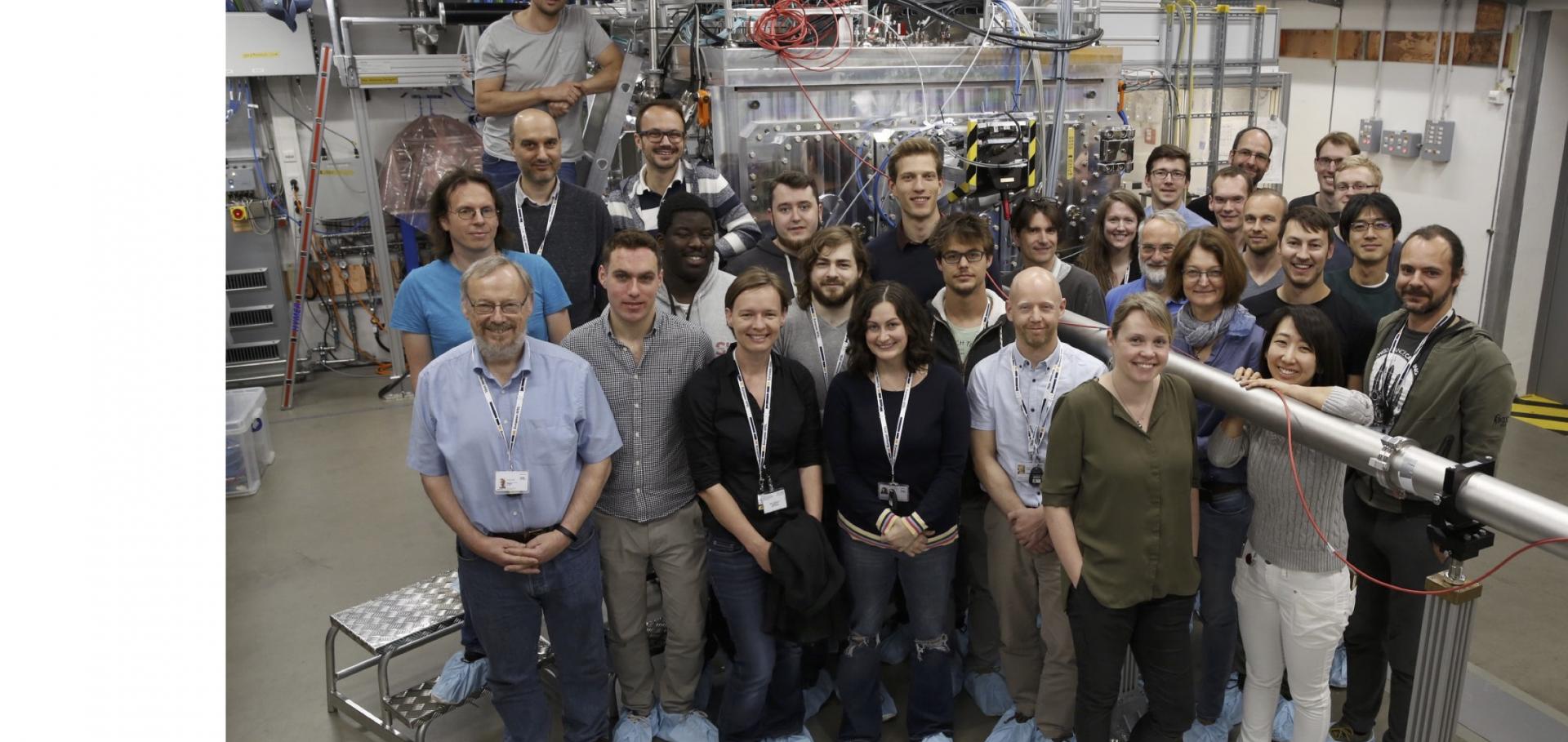Femtosecond x-ray diffraction studies of the reversal of the microstructural effects of plastic deformation during shock release of tantalum
Physical Review Letters American Physical Society 120:26 (2018) 265502
Abstract:
We have used femtosecond x-ray diffraction to study laser-shocked fiber-textured polycrystalline tantalum targets as the 37–253 GPa shock waves break out from the free surface. We extract the time and depth-dependent strain profiles within the Ta target as the rarefaction wave travels back into the bulk of the sample. In agreement with molecular dynamics simulations, the lattice rotation and the twins that are formed under shock compression are observed to be almost fully eliminated by the rarefaction process.Ab-initio simulations and measurements of the free-free opacity in Aluminum
(2018)
Simultaneous 8.2 keV phase-contrast imaging and 24.6 keV X-ray diffraction from shock-compressed matter at the LCLS
Applied Physics Letters AIP Publishing 112 (2018) 221907
Abstract:
In this work, we demonstrate simultaneous phase-contrast imaging (PCI) and X-ray diffraction from shock compressed matter at the Matter in Extreme Conditions (MEC) endstation, Linac Coherent Light Source (LCLS). We utilize the chromaticity from compound refractive X-ray lenses to focus the 24.6 keV 3rd order undulator harmonic of the LCLS to a spot size of 5 μm on target to perform X-ray diffraction. Simultaneous PCI from the 8.2 keV fundamental X-ray beam is used to visualize and measure the transient properties of the shock wave over a 500 μm field of view. Furthermore, we demonstrate the ability to extend the reciprocal space by 5˚A−1, relative to the fundamental X-ray energy, by utilizing X-ray diffraction from the 3rd harmonic of the LCLS.Validating continuum lowering models via multi-wavelength measurements of integrated x-ray emission
Scientific Reports Springer Nature 8 (2018) 6276
Abstract:
X-ray emission spectroscopy is a well-established technique used to study continuum lowering in dense plasmas. It relies on accurate atomic physics models to robustly reproduce high-resolution emission spectra, and depends on our ability to identify spectroscopic signatures such as emission lines or ionization edges of individual charge states within the plasma. Here we describe a method that forgoes these requirements, enabling the validation of different continuum lowering models based solely on the total intensity of plasma emission in systems driven by narrow-bandwidth x-ray pulses across a range of wavelengths. The method is tested on published Al spectroscopy data and applied to the new case of solid-density partially-ionized Fe plasmas, where extracting ionization edges directly is precluded by the significant overlap of emission from a wide range of charge states.Validating Continuum Lowering Models via Multi-Wavelength Measurements of Integrated X-ray Emission
(2018)


